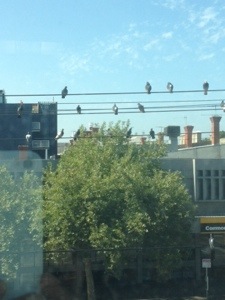 Dallas Morning News,
Dallas Morning News,
Each week we will post a question to a panel of about two dozen clergy, laity and theologians, all of whom are based in Texas or are from Texas. They will chime in with their responses to the question of the week. And you, readers, will be able to respond to their answers through the comment box.
A new Pew Research Center Religion and Public Life survey reports that 90 percent of Americans — or almost all of us — celebrate Christmas in some fashion. The study shows that most still view it as a religious holiday, but certainly not all. In fact, only a slim majority consider it a religious holiday.
Interestingly, there appears a sharp generational difference in the way Americans see Christmas. According to Pew, Americans under age 30 are far more likely to see Christmas as a cultural holiday. Likewise, they are less likely to attend religious services at Christmas or to believe in the Virgin Birth.
The survey also reports on the similarities in the ways Americans celebrate Christmas. Most of us observe the holiday with families and friends.
You can read more about Pew’s Christmas survey at this link.
And here’s the question for this week:
How do you view Christmas: Is it a religious holiday or a cultural one?
And, if you like, share how you plan on observing the day, if it is one you will observe.
Read on for a variety of answers from our panelists:
NITYANANDA CHANDRA DAS, minister of ISKCON (International Society for Krishna Consciousness), Dallas
In the Vedic tradition, religion, culture and everyday life are intertwined. The Sanskrit term Dharma means "The constitutional nature of an object."
Sometimes this term is misinterpreted as religion. However, a person can change their religion but they cannot change their dharma.
For example, the dharma of sugar is that it is sweet, the dharma of fire is that it is hot. It is not fire if it is not hot.
Śrīmad Bhāgavatam teaches that the dharma of the self is to serve and love God. This nature of desiring to love and serve someone or something is always present in a person and is properly situated when directed towards God.
A follower of the Śrīmad Bhāgavatam and the Bhagavad Gītā dedicates every action as an offering unto the Supreme. Thus ordinary things such as cooking, eating, and even sex to produce children are seen in relation to Krishna.
That is why it is called Krishna Consciousness because one is consciously and lovingly engaging their mind, body, and self in the service of the Supreme Lord, Śrī Krishna.
To see all responses of the TEXAS Faith panel click here.



 With Niranjana and Sivarama Swamis
With Niranjana and Sivarama Swamis  I do not prefer yoga, occult powers or salvation,
I do not prefer to be with the Lord in Vaikunta,
Nor do I prefer to have only pure love for him,
But I would prefer to live in Vrindavana.
I do not prefer yoga, occult powers or salvation,
I do not prefer to be with the Lord in Vaikunta,
Nor do I prefer to have only pure love for him,
But I would prefer to live in Vrindavana.  Govinda Swami: Just sat down to take a flight and the gentleman man, in charge of the cabin, came to speak to me.
He said, I'm George, from Lebanon, and I'm your servant.
If there is anyway I can serve you, please let me know.
When he said that I went into a sort of ecstasy !!
I told him that's the topmost viewpoint a person could have in his life, and I try to follow that, though most of the time I fail.
I shook his hand and said,
"George, you just made my day."
Govinda Swami: Just sat down to take a flight and the gentleman man, in charge of the cabin, came to speak to me.
He said, I'm George, from Lebanon, and I'm your servant.
If there is anyway I can serve you, please let me know.
When he said that I went into a sort of ecstasy !!
I told him that's the topmost viewpoint a person could have in his life, and I try to follow that, though most of the time I fail.
I shook his hand and said,
"George, you just made my day."  Radhadesh Mellows is one of the most anticipated events of the year. It is a kirtan festival organised by and held in a 19th century Belgian castle which now serves the purpose of being one of the most stunning temples in Europe dedicated to Radha-Krishna. Kirtan is the call-and-response chanting performed by the devotional traditions of India, although now it is found to be practiced in every country by millions of people, regardless of their race, caste or creed; Kirtan simply means to glorify God by chanting His Holy Names.
Radhadesh Mellows is one of the most anticipated events of the year. It is a kirtan festival organised by and held in a 19th century Belgian castle which now serves the purpose of being one of the most stunning temples in Europe dedicated to Radha-Krishna. Kirtan is the call-and-response chanting performed by the devotional traditions of India, although now it is found to be practiced in every country by millions of people, regardless of their race, caste or creed; Kirtan simply means to glorify God by chanting His Holy Names.  Indradyumna Swami: "The heavenly planets are more celebrated than the earth. But the celebrity of earth has defeated that of the heavenly planets because of Dwarka where Lord Sri Krsna reigned as a king. Three places, mainly Vrindavan, Mathura and Dwarka, are more important than the famous planets within the universe. These places are perpetually sanctified because whenever the Lord descends on earth He displays His transcendental activities particularly in these three places. They are perpetually the holy lands of the Lord, and the inhabitants still take advantage of the holy places, even though the Lord is now out their sight."
Indradyumna Swami: "The heavenly planets are more celebrated than the earth. But the celebrity of earth has defeated that of the heavenly planets because of Dwarka where Lord Sri Krsna reigned as a king. Three places, mainly Vrindavan, Mathura and Dwarka, are more important than the famous planets within the universe. These places are perpetually sanctified because whenever the Lord descends on earth He displays His transcendental activities particularly in these three places. They are perpetually the holy lands of the Lord, and the inhabitants still take advantage of the holy places, even though the Lord is now out their sight."  The second ring of the main dome has begun. This supporting structure is an epic coil of over 200 pieces of steel designed to fit together. The entire process involves intricate calculations accounting for forces such as counter-weight and weather hazards. The rising ring will form the base of the new temple's centerpiece, the main dome, which will be finished in tile work.
The second ring of the main dome has begun. This supporting structure is an epic coil of over 200 pieces of steel designed to fit together. The entire process involves intricate calculations accounting for forces such as counter-weight and weather hazards. The rising ring will form the base of the new temple's centerpiece, the main dome, which will be finished in tile work.  On Januray 7th, 2014, the China Social Sciences Press proudly announced the historic release of two ancient cultural classics of India: Bhagavata Purana and Bhagavad-gita As Is.
On Januray 7th, 2014, the China Social Sciences Press proudly announced the historic release of two ancient cultural classics of India: Bhagavata Purana and Bhagavad-gita As Is. 
 A litte rain couldn't stop this happy lot from a great day out chanting in the streets, book distribution and to finish off, a prasadam picnic in the park. Excellent Prasadam prepared by Garuda Dasa.
A litte rain couldn't stop this happy lot from a great day out chanting in the streets, book distribution and to finish off, a prasadam picnic in the park. Excellent Prasadam prepared by Garuda Dasa. 





